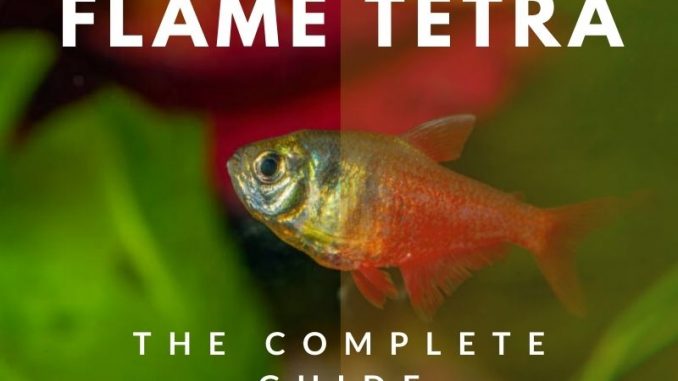
The Flame Tetra is one of the most recognizable and popular little fish in the aquarium hobby. They are sought after due to their ease of care, appearance, and behavior. These tetras are suitable for beginning hobbyists; have a beautiful, bright hue; and are entertaining schooling fish.
If you spy one at the pet store lacking the vibrant coloring you’ve seen in pictures, you can chalk it up to stress. Once you get them home and provide them with optimal conditions and lower their stress levels, you should notice an uptick in hue. It’s an important lesson about the negative effects of stress on your aquarium fish and a reminder about how important it is to curate a tank experience that reduces stress.
In this article, I’ll go over proper care for Flame Tetras, including information about their natural habitat, behavior, appearance, care needs, and breeding habits. If you like watching schooling fish, there’s no doubt that these tetras will be at the top of your wish list.
TABLE OF CONTENTS
Flame Tetra Facts & Overview
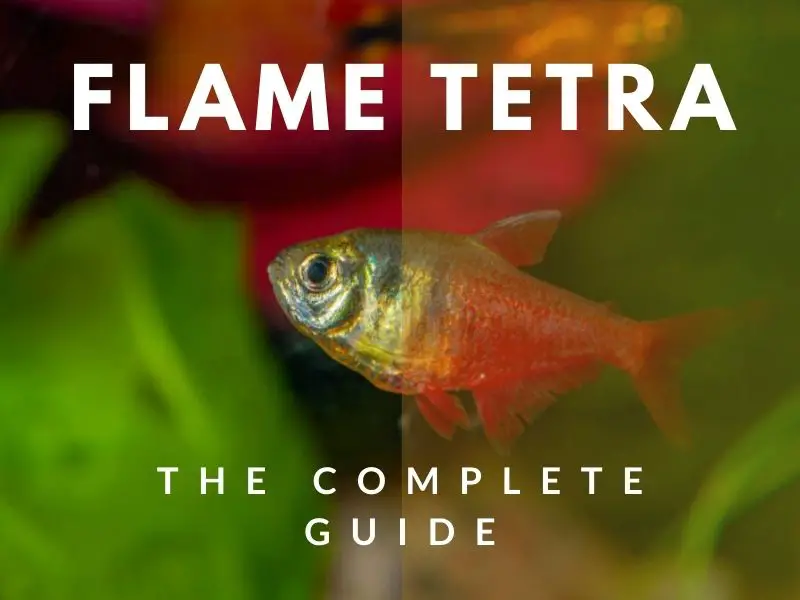
| Category | Rating |
| Care Level: | Easy |
| Temperament: | Peaceful |
| Color Form: | Silver and red |
| Lifespan: | 3-5 years |
| Size: | 0.8-1 inch |
| Diet: | Omnivore |
| Family: | Characidae |
| Minimum Tank Size: | 15 gallons |
| Compatibility: | Peaceful community |
Hailing from the rivers along the coast of southeastern Brazil, Flame Tetras are sadly rarely found in their original South America. Once plentiful in the Rio de Janeiro area, particularly in the feeder rivers of Guanabara Bay, their numbers have dwindled as their habitat has been destroyed, in part from pollution and the appearance of invasive species.
Now, instead of the growing wild in Rio Guandu and Rio Paraíba do Sul, Flame Tetras are commercially bred in the Sao Paulo area of Brazil. In fact, in 2004, Flame Tetras made the list of threatened species, and have remained there ever since.
However, though they are no longer commonly found in the wild, it is nonetheless important to know the natural habitat of Flame Tetras in order to recreate their preferred conditions to the extent possible.
They are accustomed to coastal waters that are shallow and slow-moving. Because they are found in rivers, streams, and tributaries, they like sandy substrates with underwater plants and do well in water that is either clear or brown. All of these attributes are easily achievable in a home aquarium, which is one of the reasons these fish are appropriate for beginners.
In the wild and in captivity, Flame Tetras, a scientific name Hyphessobrycon flammeus, are schooling fish and do best in groups of 6 or more. Also known as:
- Fire Tetra
- Green Fire Tetra
- Rio Tetra
- Von Rio Tetra
Flame Tetras have a diet that consists of tiny crustaceans, small insects, plants, and worms. They have a lifespan of about 3 to 5 years when kept in ideal conditions.
Typical Behavior
Flame Tetras are known for their calm disposition, except of course, when they are attempting to consume their own offspring eggs.
But they are peaceful with their own species, preferring to travel in schools of at least 6, and get along with other species of similar size and temperament.
Flame Tetras are easily stressed, so it’s best to keep them away from active swimmers and fast-moving currents. And because they are easily agitated, they like to have places to hide when they feel threatened or just need some time away. They will look for caves and driftwood that will offer them some respite from the chaos of daily tank life.
They do love swimming, so give them ample space to swim around the tank. They will entertain you with their swimming through the thick leaves of the lush plants you provide them.
Appearance
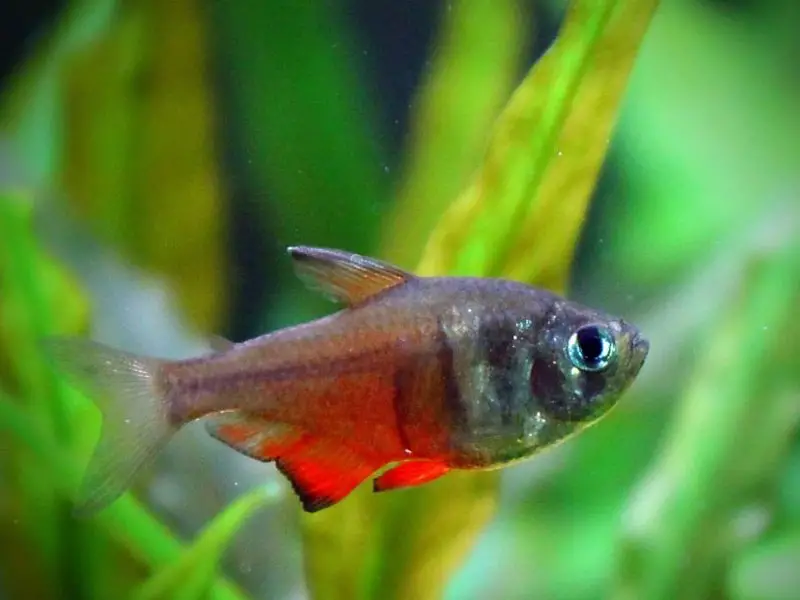
The Flame Tetra is recognizable as a tetra with its tall, flat shape and large anal fin that extends past the dorsal fin.
Measuring in at about 1 inch, or 2.5 cm, the Flame Tetra is on the smaller side, a consideration when choosing tank mates. If you are going to pair them with other tetras, make sure they are similar in size, as larger tetras may view them as lunch rather than as a neighbor.
Flame Tetras have silver bodies and flame red sides and back. The red hue varies from the dorsal fin to the bottom of the caudal fin, and the other fins often have a translucent glow.
Stress and environment affect the intensity of the Flame Tetra’s coloring, which I will discuss in more detail later on. Additionally, the sexually mature Flame Tetras have a more intense coloring than the juvenile Flame Tetras.
Differentiating between males and females
Female Flame Tetras have slightly larger and rounded bodies, while males have smaller bodies that taper around the tail. They are more brightly colored than the females, and also have black stripes on their anal fins and a bony hook on their anal and abdominal fins that they use for mating.
The females don’t have a hook, but their anal fin curves. Females also have different silver yellow coloring on the abdomen that the males do not have.
Finally, the males do tend to exhibit brighter and more intense coloring than the females, particularly when it’s time to breed and they are vying for the attention of the female Flame Tetras.
Habitat and Tank Conditions
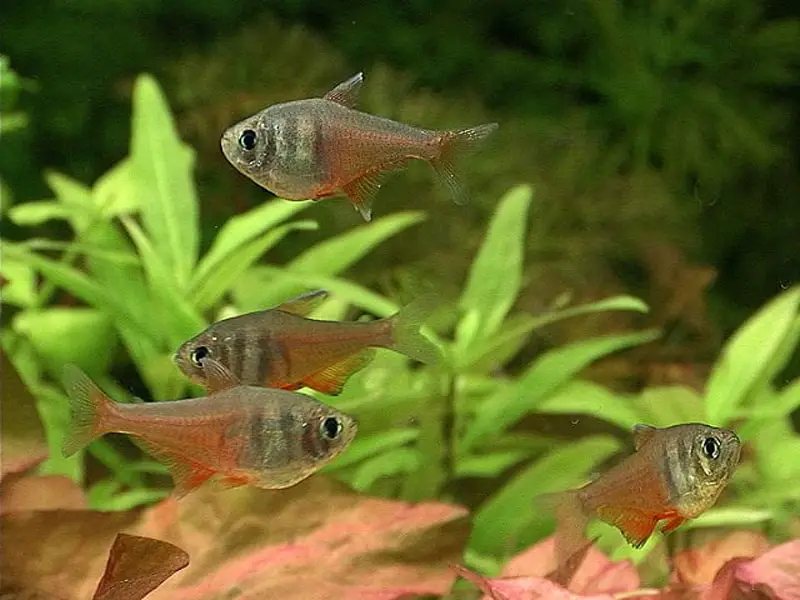
Starting with the substrate, choose sand, which mimics their natural habitat, or a smooth gravel.
Flame Tetras prefer dim lighting, so don’t hit them with bright light, whether it’s artificial or natural.
They also light a highly decorated tank, with driftwood, caves, and plants. This keeps them away from direct light and also gives them places to hide.
Finally, make sure that you leave them enough space to swim around in their schools. They do like to swim through the plants, but if the tank is over-decorated, they won’t be able to swim freely. One idea is to plant trees along the walls of the tank so that they can still enjoy the cover of the plants and have space to swim.
Since they often have brownish water in the wild, you can recreate the water conditions in their natural habitat by placing dry leaves at the bottom of the tank. This will tint the water brown. Don’t leave the leaves in for too long or they will rot and compromise the integrity of the water. I would change the leaves when you perform bi-weekly water changes.
Water Conditions
Although Flame Tetras can handle a wide range of temperatures, from 64°F to 85°F (17.7 to 27.8 °C), they are most comfortable in the 72 to 82°F (22.3-27.8°C) range.
You should check conditions regularly; while Flame Tetras have a wide range of acceptable parameters, they don’t do well with abrupt changes.
You should also perform a 25 to 50% water change every two weeks and use a filter, although not so strong that it increases the water flow to an uncomfortable level.
The optimal parameters for Flame Tetras are:
- pH levels: 5.5 to 7.5
- Water hardness: 3 to 15 dGH
- Water temperature: 72°F to 82°F (22.3-27.8°C)
What Size Aquarium Do They Need?
A 15-gallon (56.8 liters) tank will accommodate a school of 6 or 7 Flame Tetras.
You’ll need about 2 gallons for each fish, and of course, if you have a community tank with other species, you’ll have to go up in tank size as their needs require.
Tank Mates
Flame Tetras do well with tank mates that are comparable in size and temperament. Avoid pairing them with larger, aggressive fish, and those that are extra active. Choose tank mates that also prefer slow-moving water; fast water will stress them out.
They will be content with other small tetras, like Neon Tetras, as well as Danios, Rasboras, and some bottom dwellers, as long as they are peaceful. In general, they do well with livebearers.
You should avoid housing them with larger tetras that might eat them, and avoid any fish that does not have a calm temperament.
Keeping Flame Tetras Together
Due to the fact that they are schooling fish, Flame Tetras should be kept in a group of at least 6.
Diet
Flame tetras need variety in their diet; they are omnivores and will eat protein and plants.
Here’s a list of items that they should have in their diet:
- Algae
- Bloodworms
- Brine shrimp
- Daphnia
- Detritus
- Flakes
- Granules
- Mosquito larvae
- Tablets
- Tubifex
While they enjoy packaged flakes, granules, and pellets, they do need the addition of live and frozen meaty protein that harkens back to their diet in the wild.
As with most fish, they should be fed small amounts a few times a day. Overfeeding leads to increased waste, which threatens water quality and fish health.
Care
It’s easy to tell when Flame Tetras are stressed for any reason, including substandard tank conditions. The faded and dull coloring is a pretty sure symptom that something is wrong.
Although your Flame Tetras are pretty adaptable to a variety of water conditions, they will suffer if their water is unclean or if the water moves too fast for their liking. Their hue can also suffer if they are put in a tank without other Flame Tetras, or if they are paired with fish that are much larger and more aggressive than they are.
Stress can also occur from lack of swimming space or even an unbalanced diet. Some success has been found with hormone treatments that are added to food or the tank water. These treatments intensify and brighten the Flame Tetra’s color. I do not, however, recommend these hormone treatments for a couple of reasons.
- This color enhancement process lowers their ability to fight disease and actually shortens their lifespan.
- Fish that are under stress for any of the reasons mentioned above have decreased immunity and are more at risk for illness and death. Masking their stress with fake color does nothing to benefit your Flame Tetras and may prevent you from seeing actual signs of disease.
You would be better off actually remedying the causes of stress that are making your fish lose their color in the first place. Perform regular water changes, test the water conditions, and make sure their habitat and environment are suitable.
Breeding
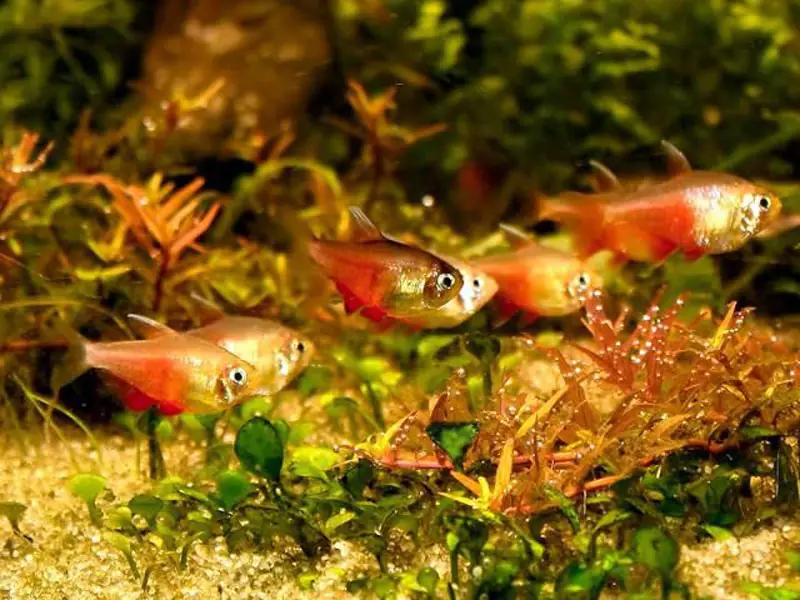
Flame Tetras spawn and scatter their eggs. They reach reproductive maturity early on in life: females are able to reproduce at 6 to 8 months of age, and males at 8 to 12 months of age.
You will need a dedicated spawning tank, both because you’ll want to increase the temperature and because the adult Flame Tetras have cannibalistic tendencies.
The breeding tank should be a neutral or slightly acidic 80°F (26.7 °C), and you should condition it. The lighting should be dim, and you’ll need something for the eggs to attach to, like a spawning mop or grassy plants. Alternatively, a mesh liner will allow the eggs to fall through the liner to the bottom of the tank. This will discourage the parent fish from eating the eggs since they can’t fit through the mesh.
You can circulate the water in the spawning tank with a sponge filter that is air-powered.
Once you have all the tank conditions set, you can add one pair of Flame Tetras and cover the tank. Let them be and check for eggs the next day–they are hard to see, so look carefully. As soon as you see the small, clear eggs, put the adults back in the main tank.
In a day or two, the fry will hatch, and after hanging onto plants for a couple of days, will start free swimming on the third day. The Flame Tetra fry looks like little pieces of glass; they will start eating infusoria and paramecium, but at about a week old, they can have baby brine shrimp and microworms.
They can be introduced to the main tank when they are 6 months old, at which point the reproductive cycle begins again, as females will be reproductively mature at the same time they join the community tank.
Pro tip: Breeders who use hormones for artificial coloring maintain that these additives do not negatively affect reproduction. However, since these hormones can shorten the lifespan and endanger the fish, I don’t recommend them.
Are Flame Tetras Suitable for your Aquarium?
Although Flame Tetras are suitable for beginning hobbyists, they are interesting and attractive enough to keep more advanced hobbyists entertained.
They are not super picky about their water conditions and will do well with most other fish that are similar in size and equally peaceful, although you’ll want to avoid pairing them with fish who need fast-moving water.
They are also easy to breed, so if you want to explore this aspect of fishkeeping, Flame Tetras are a good choice.
My one caution would be that you want to make sure to have a tank that is large enough to accommodate a school of Flame Tetras and their need for swimming space.
Do you have experience raising Flame Tetras? I’d love to hear your experiences with these schooling fish. Please leave a note in the comments below.

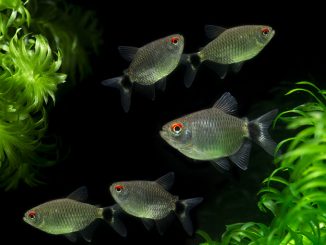
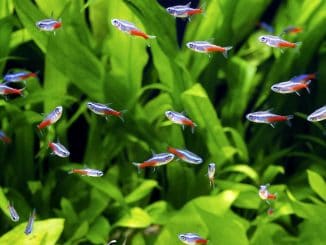
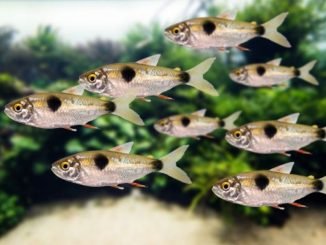
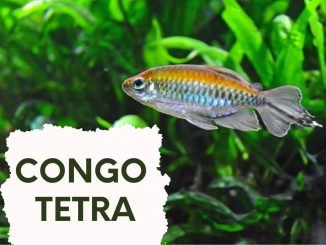
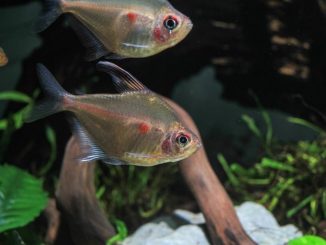
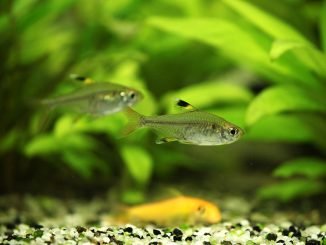
Be the first to comment